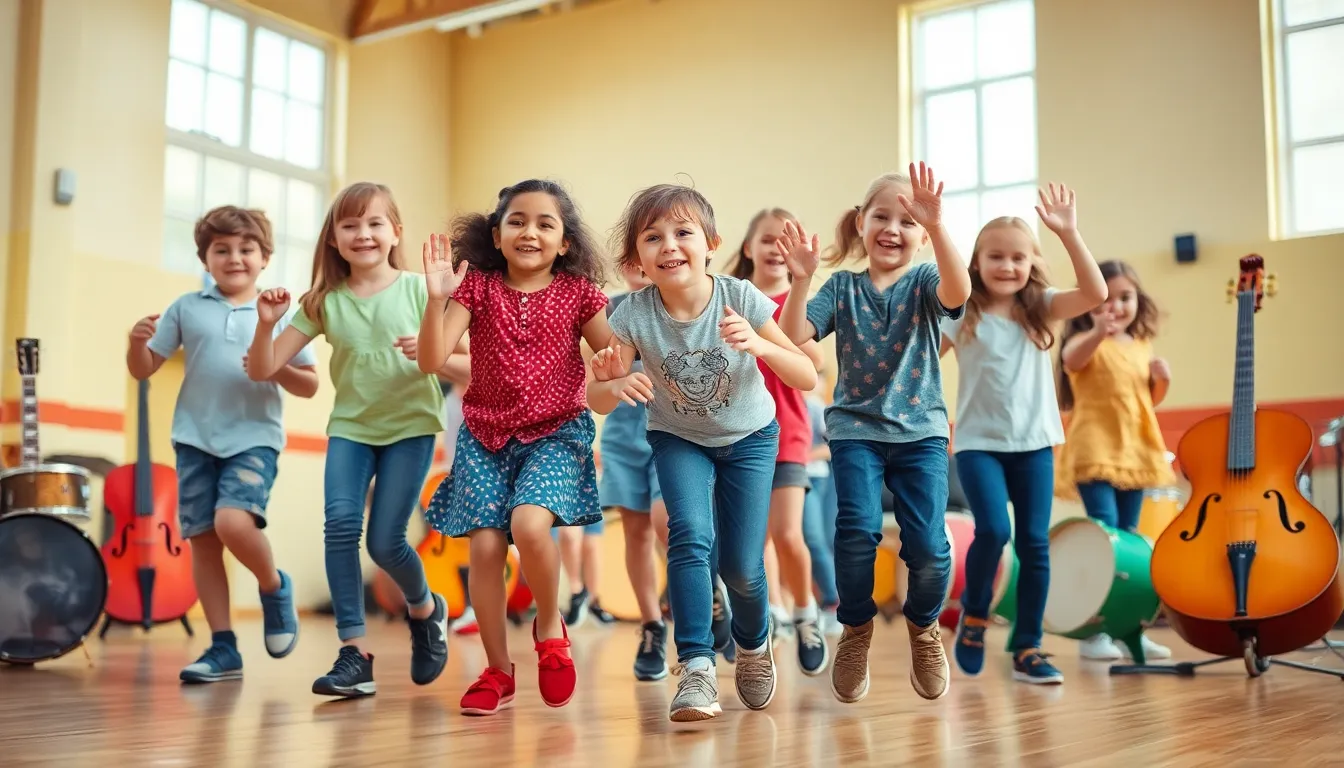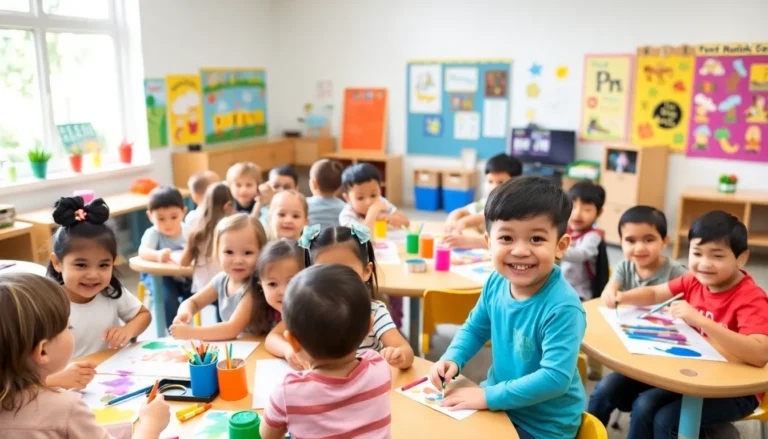Table of Contents
ToggleMusic and movement go together like peanut butter and jelly, creating a delightful blend that stimulates both the body and the mind. Whether it’s the infectious beat of a dance track or the soothing melody of a lullaby, rhythm has a magical way of making people want to move. Just think about it—who can resist tapping their feet or swaying their hips when a catchy tune plays?
Understanding Music and Movement
Music and movement share a deep, intrinsic relationship, influencing one another in countless ways. This connection plays a pivotal role in human experience, shaping emotions and actions.
Definition of Music and Movement
Music refers to the art form composed of sound elements arranged in sequences, conveying emotions and messages. Movement encompasses any physical action or gesture that people perform, often in reaction to musical stimuli. Together, they create a holistic experience, as rhythm and melody motivate individuals to express themselves through dance and physical activity.
Historical Context
Music and movement dates back to ancient civilizations, with archaeological evidence showing their integration in rituals and celebrations. The ancient Greeks connected music to dance in their theatrical performances, highlighting its cultural significance. Throughout history, various cultures employed music to enhance movement, from traditional folk dances to modern choreographed routines. The evolution of these expressions mirrors societal changes, illustrating how music shapes physical interactions over centuries.
Benefits of Music and Movement

Music and movement provide numerous benefits across various aspects of life. Engaging in these activities fosters growth and development in physical, cognitive, and emotional domains.
Physical Development
Physical development occurs as individuals incorporate music and movement into their routines. Rhythm encourages coordination and balance, promoting gross motor skills through activities like dancing or rhythmic exercises. Engaging with music often inspires movements that stretch muscles and improve flexibility. Children particularly benefit from structured movement activities set to music, as they can enhance spatial awareness. These experiences ultimately support overall physical health and fitness.
Cognitive Growth
Cognitive growth is enhanced through the interplay of music and movement. Research shows that rhythmic patterns can improve memory and attention spans. When children dance or move to music, they often develop greater problem-solving skills. Integrating music into learning environments encourages creative thinking, facilitating better outcomes in both academic and social contexts. Regular engagement with music also provides patterns that aid in language development and literacy skills.
Emotional Wellbeing
Emotional wellbeing flourishes alongside participation in music and movement. Music has a unique ability to evoke feelings, helping individuals express emotions that may be difficult to articulate. Movement in tandem with music can reduce stress and anxiety, promoting relaxation and joy. Social interactions during group activities enhance connections, fostering a sense of belonging. For many, these shared experiences provide comfort and stability, contributing positively to mental health.
Methods of Incorporating Music and Movement
Incorporating music and movement into daily activities enhances engagement and development. Various methods exist for different settings.
Educational Settings
Teachers can utilize music in classrooms to create an interactive learning environment. Singing songs enhances language and literacy skills. Movement activities, such as dancing or using instruments, enhance engagement while teaching rhythm and coordination. Incorporating music into lesson plans fosters a lively atmosphere. Students often demonstrate increased focus and retention through rhythmic learning. Group activities encourage social interaction and teamwork, strengthening community bonds among peers.
At Home Activities
Families can integrate music and movement during playtime for enjoyable bonding experiences. Creating a dance party at home involves dancing to favorite songs and expressing creativity. Participation in musical crafts, such as making instruments, stimulates both creativity and motor skills. Parents can encourage storytelling through song and movement, enriching imaginative play. Daily routines can include music by playing songs during meals or chore time, promoting a joyful atmosphere at home. Engaging in these activities supports physical, cognitive, and emotional growth for every family member.
Case Studies on Music and Movement
Research shows various programs successfully integrate music and movement to foster development. Programs like “Music Together” incorporate singing and movement, promoting cognitive and social skills in young children. Trained facilitators guide group activities, encouraging toddler participation and fostering a sense of community. Another effective program is “Zumbini,” aimed at infants and toddlers, blending music and movement to enhance bonding between caregivers and their children. Both programs highlight the benefits of combining auditory and physical stimulation in early learning environments.
Successful Programs
Successful programs demonstrate the effectiveness of combining music with movement. “Brain Dance,” developed by Anne Green Gilbert, engages participants through varied movement patterns synchronized with music. This method enhances body awareness and cognition. “Kindermusik” offers classes focusing on music, movement and language development. Research indicates students enrolled in such programs show improvements in motor skills and academic readiness. Furthermore, “Music and Motion” uses rhythmic activities to cultivate social skills, with studies showing strong correlation between regular participation and benefits in emotional wellbeing.
Impact on Children
The impact on children engaging in music and movement activities is significant. Notably, studies indicate these interactions boost coordination and balance, crucial for physical development. Children participating in rhythmic activities often display improved memory retention, a direct result of musical exposure. Socially, music and movement foster cooperation and communication among peers, providing valuable life skills. Emotional growth also flourishes; engaging with music helps children express feelings in healthy ways. Programs focusing on music and movement create environments where children feel safe and encouraged to explore their creativity and social connections.
The bond between music and movement is undeniable and deeply rooted in human experience. Engaging with both not only enhances physical abilities but also nurtures cognitive and emotional growth. Whether through playful family activities or structured educational programs, incorporating music and movement into daily life fosters creativity and builds connections.
As individuals embrace these activities, they unlock a world of benefits that enrich their lives. The rhythmic dance of music and movement continues to inspire and uplift, reminding everyone of the joy found in this harmonious relationship.







